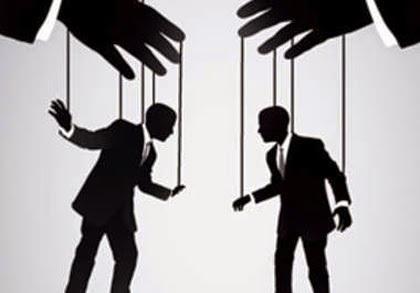The term "" refers to a secret government that operates as a state within a state.
There are some who say the United States actually is ruled by a deep state, aka The Powers That Be (TPTB). One of them is Philip Giraldi, a former CIA officer and currently the executive director of the Council for the National Interest.
In a July 30, 2015 article for The American Conservative, Giraldi that the deep state is a post-World War II creation, the end result of the "military industrial complex" that Dwight Eisenhower warned about. But the infrastructure of the deep state most likely had been put in place through the passage of the Federal Reserve Act prior to the First World War. As evidence, Giraldi reminds us:
Consider for a moment how Washington operates. There is gridlock in Congress and the legislature opposes nearly everything that the White House supports. Nevertheless, certain things happen seemingly without any discussion: Banks are bailed out and corporate interests are protected by law. Huge multi-year defense contracts are approved. Citizens are assassinated by drones, the public is routinely surveilled, people are imprisoned without be charged, military action against "rogue" regimes is authorized, and whistleblowers are punished with prison.
 David Talbot is a journalist, founder of Salon.com, and author of Brothers: The Hidden History of the Kennedy Years. His latest book is The Devil's Chessboard: Allen Dulles, the CIA, and the Rise of America's Secret Government (October, 2015), recommended by a Kirkus review:
David Talbot is a journalist, founder of Salon.com, and author of Brothers: The Hidden History of the Kennedy Years. His latest book is The Devil's Chessboard: Allen Dulles, the CIA, and the Rise of America's Secret Government (October, 2015), recommended by a Kirkus review:
"Washington, D.C., regulars may know some of this information, and foreign nations certainly do, but all engaged American citizens should read this book and have their eyes opened."
Below is a book review of Talbot's The Devil's Chessboard, by Catherin Austin Fitts, March 20, 2016:
Power in America is gathered and distributed by covert means. The public perception of American power promotes a mythic picture of how things work with stories and policies that make us look and feel good. The real power lines - like the third rail in a subway system where the electricity runs - drive the real decisions that control and allocate prestige and resources, often in life-and-death struggles. America is run by what former diplomat and professor Peter Dale Scott describes as "the deep state" - a complex web of public and private enterprises, societies, investors and networks that operate in the shadows and act above the law with impunity. If we liken America's deep state to a runaway train, the conductor lost control as a result of the assassination of President John F. Kennedy and the success of the subsequent cover-up. Successive rounds of assassination, invisible weaponry (including the implementation of surveillance and control systems) and extraordinary amounts of financial fraud have continuously emboldened the deep state ever since. In The Devil's Chessboard: Allen Dulles, the CIA and the Rise of America's Secret Government, David Talbot writes about the life of Allen Dulles, the first civilian and longest serving Director of the CIA. The book chronicles Dulles' work in the American intelligence apparatus through WWII into the creation and growth of the CIA and the amassing of unaccountable domestic and global power by the deep state. The Devil's Chessboard doesn't explain the deep state. But readers glimpse some of its aspects and one of the most important avenues through which it has become so powerful today. [...] Beautifully written, Talbot carries us through Dulles' personal life and career, building a careful picture of the nature, behavior, experience and networks of the man. In the process, he describes some but not all of the many dark corners that marked the CIA while Dulles served as DCI:- The coordination between US corporations with the Nazis during WWII and the subsequent integration of Nazi scientists into American universities, government programs and investments networks;
- The authority given to the CIA following WWII to manage the hidden system of finance created from assets seized by the Americans and to create a black budget with funds siphoned off from the accounts of federal agencies;
- The development of MK-Ultra and mind control and biological warfare experiments on American citizens;
- The growth of narcotics trafficking by CIA affiliates in the 1950's and 1960's and the resulting growth in money-laundering leadership by US financial institutions.
See " Facebook eavesdrops on your phone conversations & even tracks non-FB users "
The pathology, however, has remained and blossomed. We are facing the continued growth of an inhuman culture. If we are going to understand how to restore and revitalize a human culture and human enlightenment, it will help to understand what we are dealing with and how it became so powerful.-End of book review-

